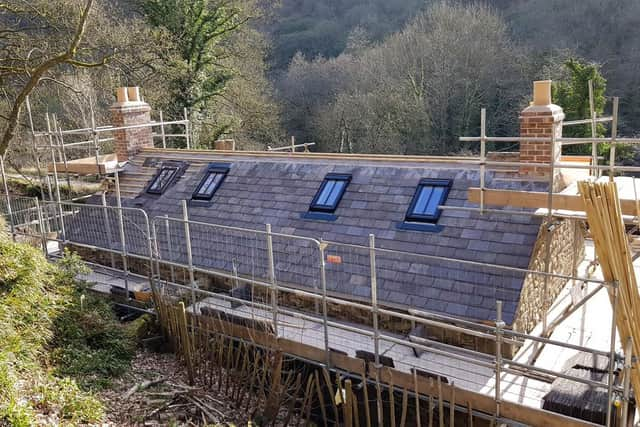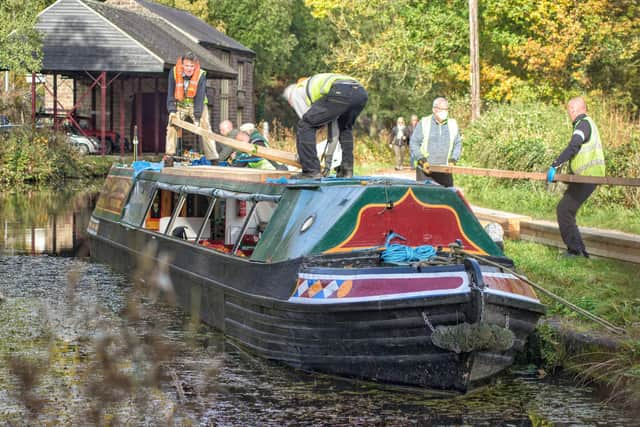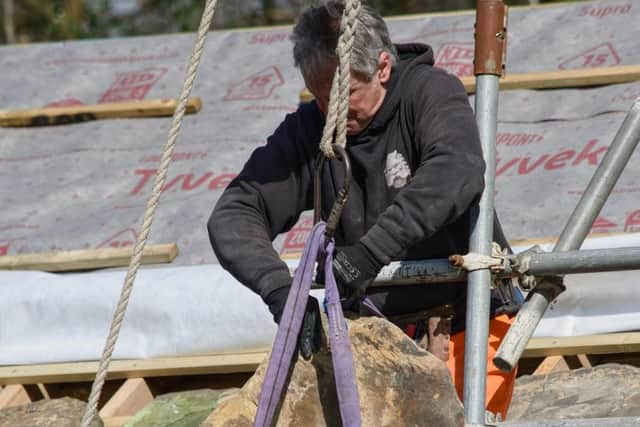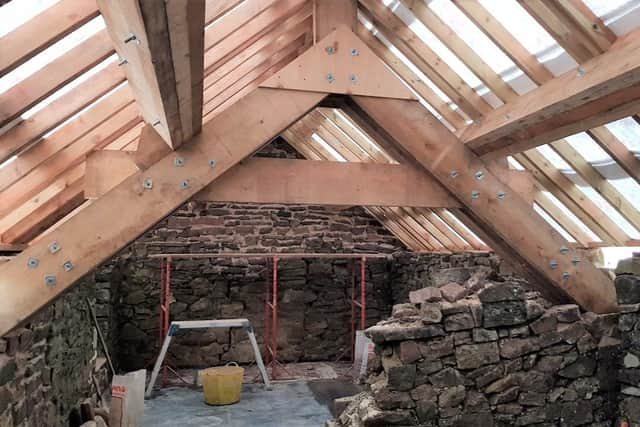Derbyshire Wildlife Trust restoration of historic Lea Wood canal cottage hits milestone as roof completed
and live on Freeview channel 276
Derbyshire Wildlife Trust is painstakingly restoring Aqueduct cottage – built by the family of Florence Nightingale – following a successful crowdfunding campaign in 2019.
The roof has proved to be be one of the project’s biggest challenges, with the huge timbers and more than four tonnes of tiles being transported to the site via boat and work delayed by lockdowns.
Advertisement
Hide AdAdvertisement
Hide AdRon Common, a volunteer with the trust who is helping to coordinate the project, said: “This stage of the restoration has been long-awaited and is one of the most exciting.


“It’s been a long road to get to this point and although the lockdowns have created additional challenges, to see our craftsmen builders working on the roof is a fantastic achievement.”
Local firm PT Joinery Services started work on the timber roof frame in November 2020 by fitting the first rafters, but construction was then halted until June to allow the front wall to be reinforced before it could bear the full weight.
The design consisted of a central truss and four purlins, each consisting of three five-metre, 70 kilo beams bolted together.
Advertisement
Hide AdAdvertisement
Hide AdThe composite design was a practical solution to enable the heavier sections of the roof frame to be cut and assembled on site.


The timbers were floated in from Cromford wharf to Lea Wood pump house, just as the originals would have been in 1802, and the tiles followed in February.
Restoration specialist Andrew Churchman Ltd then took over the next stage of construction, rebuilding the chimneys using lime mortar and reclaimed bricks, installing the heritage Velux windows, then laying the tiles.
Work has also been progressing inside with the addition of steel joists to hold the first floor, which has been missing for 40 years.
Advertisement
Hide AdAdvertisement
Hide AdArchitect James Boon said: “Plans for the cottage needed to meet the brief from Derbyshire Wildlife Trust and include an open-plan activity room on the first floor.


“In order to create a light, workable space the design included two windows overlooking the canal at the front, and four roof lights to the rear. The oak floor and exposed beams will create a stunning character-filled room.”
Some detailing is still to be added but those working on the project hope to hold a ‘topping out’ ceremony to mark the roof’s completion.
The stonework will need several months to dry before it too can be finished. In the meantime, landscaping work around the cottage is making good progress.
Advertisement
Hide AdAdvertisement
Hide AdRon said: “We look forward to the completion of the restoration project later this year, and thank all of our volunteers, suppliers and members of the public for their ongoing support.


“Aqueduct cottage is totally unique and a key piece of Derbyshire’s canal heritage. To see it restored will not only enhance the local landscape, but it will also give visitors an opportunity to learn about the region’s colourful history and create an enticing gateway to the beautiful Lea Wood Nature Reserve.”
“In these confusing and worrying times, local journalism is more vital than ever. Thanks to everyone who helps us ask the questions that matter by taking out a subscription or buying a paper. We stand together.” – Andrew Wakefield, editor.